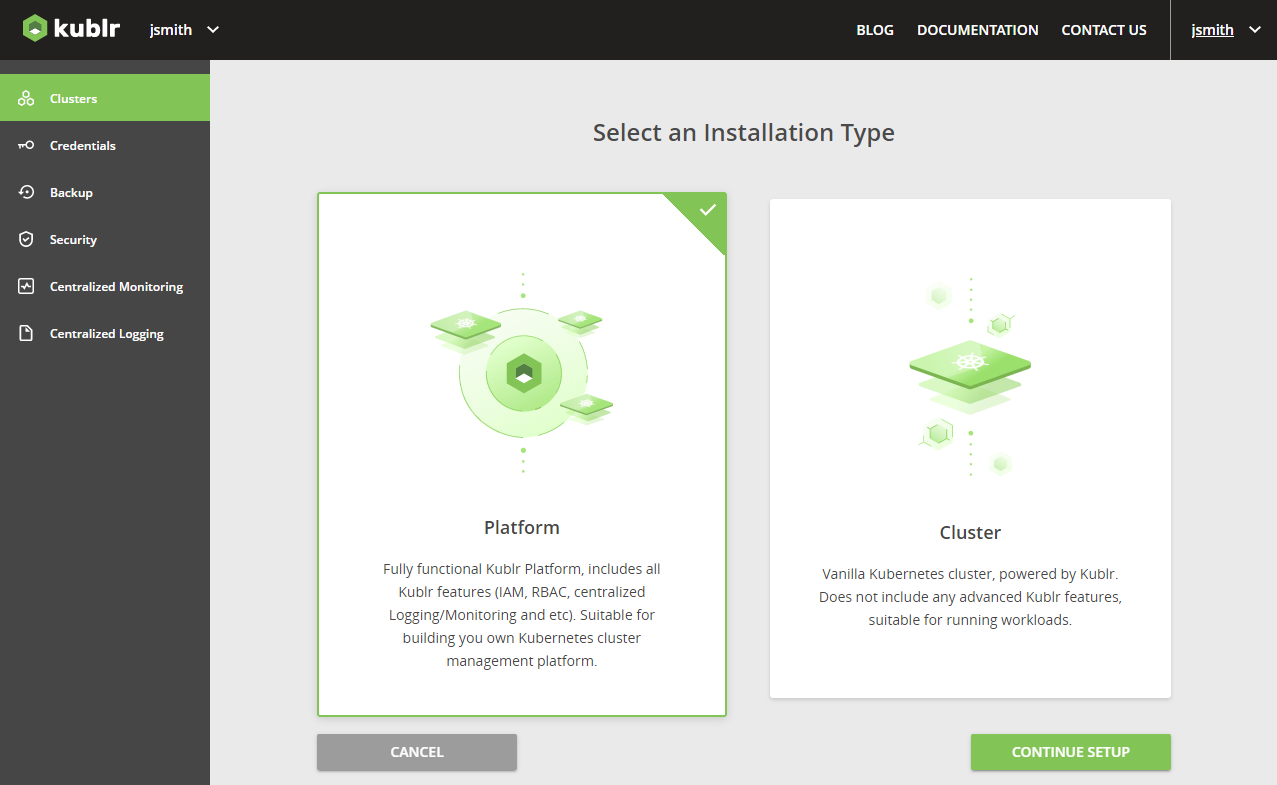Kublr application is intended for a comfortable managing of the Kubernetes clusters: it is used to deploy clusters, monitor their states and managing how they work. So, this mean, to install a Kubernetes cluster, first you need Kublr.
But Kublr itself is deployed only as a part of a Kubernetes cluster. And here is a problem: to deploy cluster, you need Kublr - to deploy Kublr, you need cluster. Is this a vicious circle?
Yes and no, as there is a way out: Kublr Demo/Installer - dockerized lightweight Kubernetes cluster with Kublr included.
Remember the following:
Therefore normaly you will go through the following steps to deploy and start using Kublr:
Get the Docker image of Kublr Demo/Installer cluster and run it locally.
As this gives you your local copy of Kublr, you use it to deploy platform - in the cloud or on-premise.

Stop/delete your local Docker cluster with Kublr (aka, Demo/Installer).
Access your platform with its own Kublr.
Use it to comfortably create and manage any number of your Kubernetes clusters.
The table below shows what you can do via Kublr user interface in case of Plaform or Cluster:
Note that both interfaces are only intended for your convinience, not for limitation - you can add or remove ANY feature via
CUSTOMIZE SPECIFICATION- during installation or later editing.
| FEATURE | Platform | Cluster | ||||
|---|---|---|---|---|---|---|
| Included by default? | May be included? | May be excluded? | Included by default? | May be included? | May be excluded? | |
| Ingress Controller » | Yes | NA | No | No | Yes | Yes |
| » NGINX Ingress Controller | Yes | NA | No | No | Yes | Yes |
| » Let’s Encrypt | No | Yes | Yes | No | Yes | Yes |
| Control Plane | Yes | NA | No | No | No | NA |
| Centralized Logging » | Yes | Yes | Yes | Yes | Yes | Yes |
| » Fluent bit | Yes | Yes | Yes | WP | WP | WP |
| » Fluentd | No | Yes | Yes | WP | WP | WP |
| » Elasticsearch | Yes | Yes | Yes | WP | WP | WP |
| » OpenSearch | No | Yes | Yes | WP | WP | WP |
| Self-Hosted Logging » | NA | NA | NA | No | Yes | Yes |
| » Fluent bit | NA | NA | NA | Yes | Yes | Yes |
| » Fluentd | NA | NA | NA | No | Yes | Yes |
| » Elasticsearch | NA | NA | NA | Yes | Yes | Yes |
| » OpenSearch | NA | NA | NA | No | Yes | Yes |
| Centralized Monitoring » | Yes | Yes | Yes | Yes | Yes | Yes |
| » Prometheus | WP | WP | WP | WP | WP | WP |
| » Victoria Metrics | No | Yes | Yes | WP | WP | WP |
| » Grafana | Yes | Yes | Yes | WP | WP | WP |
| » Alert Manager | Yes | Yes | Yes | WP | WP | WP |
| Self-Hosted Monitoring » | NA | NA | NA | No | Yes | Yes |
| » Prometheus | NA | NA | NA | WP | WP | WP |
| » Victoria Metrics | NA | NA | NA | No | Yes | Yes |
| » Grafana | NA | NA | NA | Yes | Yes | Yes |
| » Alert Manager | NA | NA | NA | Yes | Yes | Yes |
Table annotation:
| FEATURE | Platform | Cluster | ||||
|---|---|---|---|---|---|---|
| Included by default? | May be included? | May be excluded? | Included by default? | May be included? | May be excluded? | |
| Centralized Logging/Self-Hosted Logging » | Yes | Yes | Yes | No | Yes | Yes |
| » AWS CloudWatch Logs | No | Yes | Yes | No | WP | Yes |